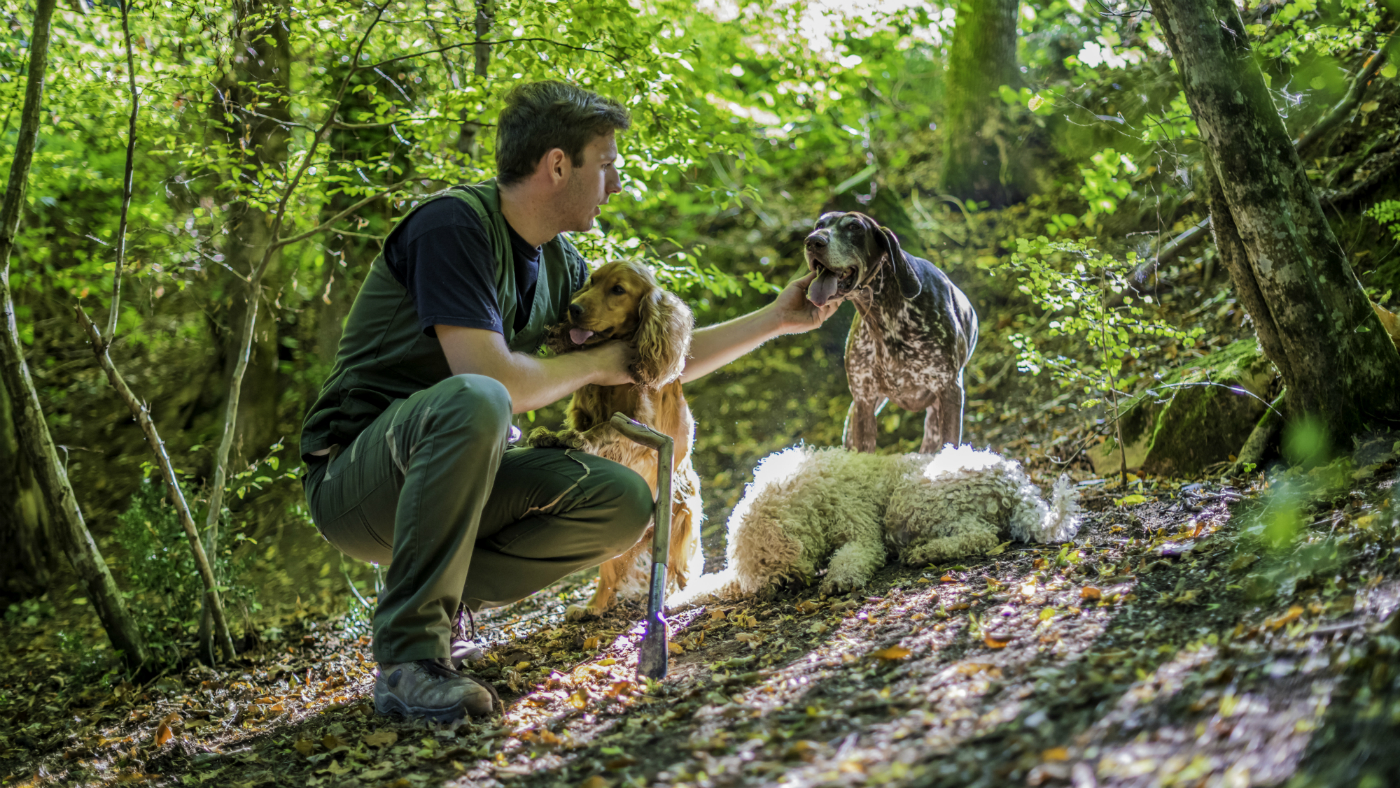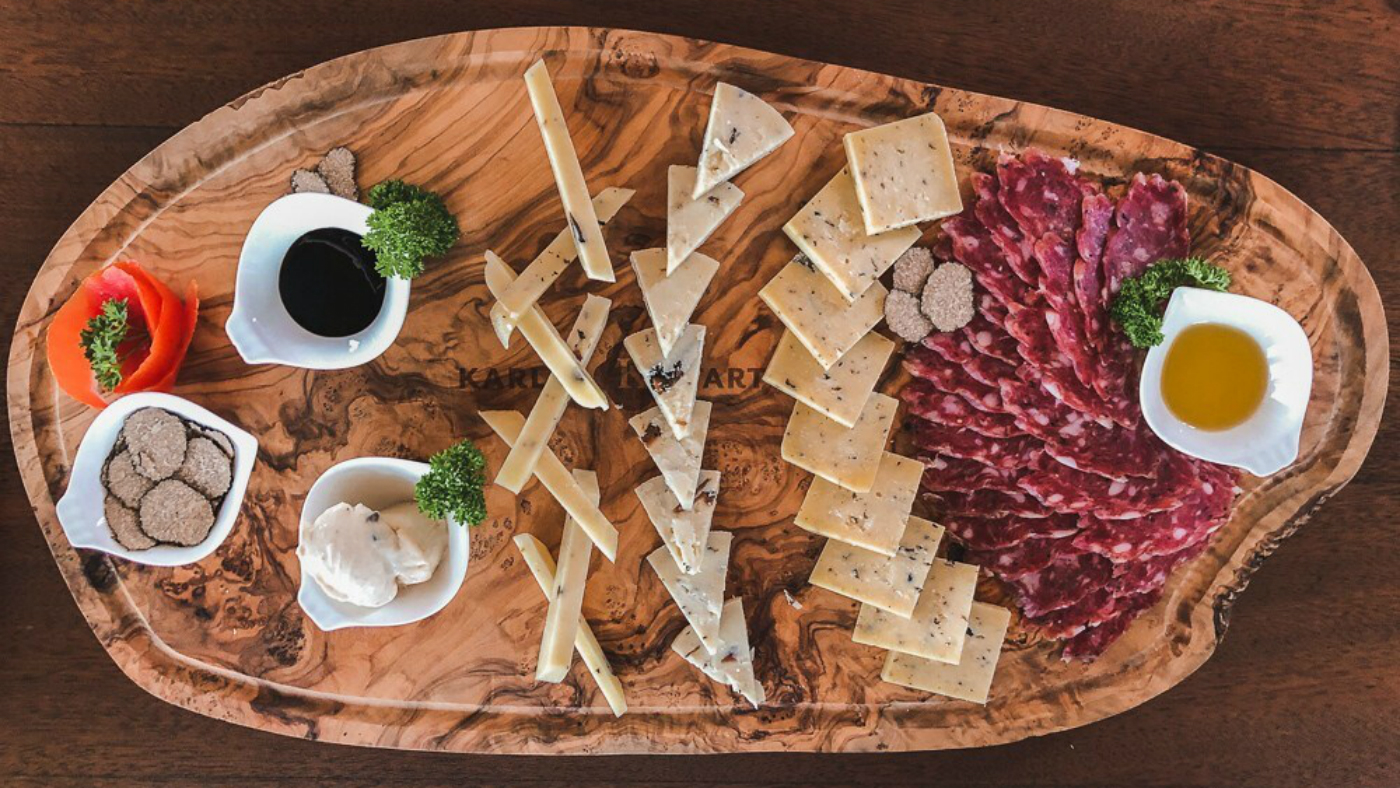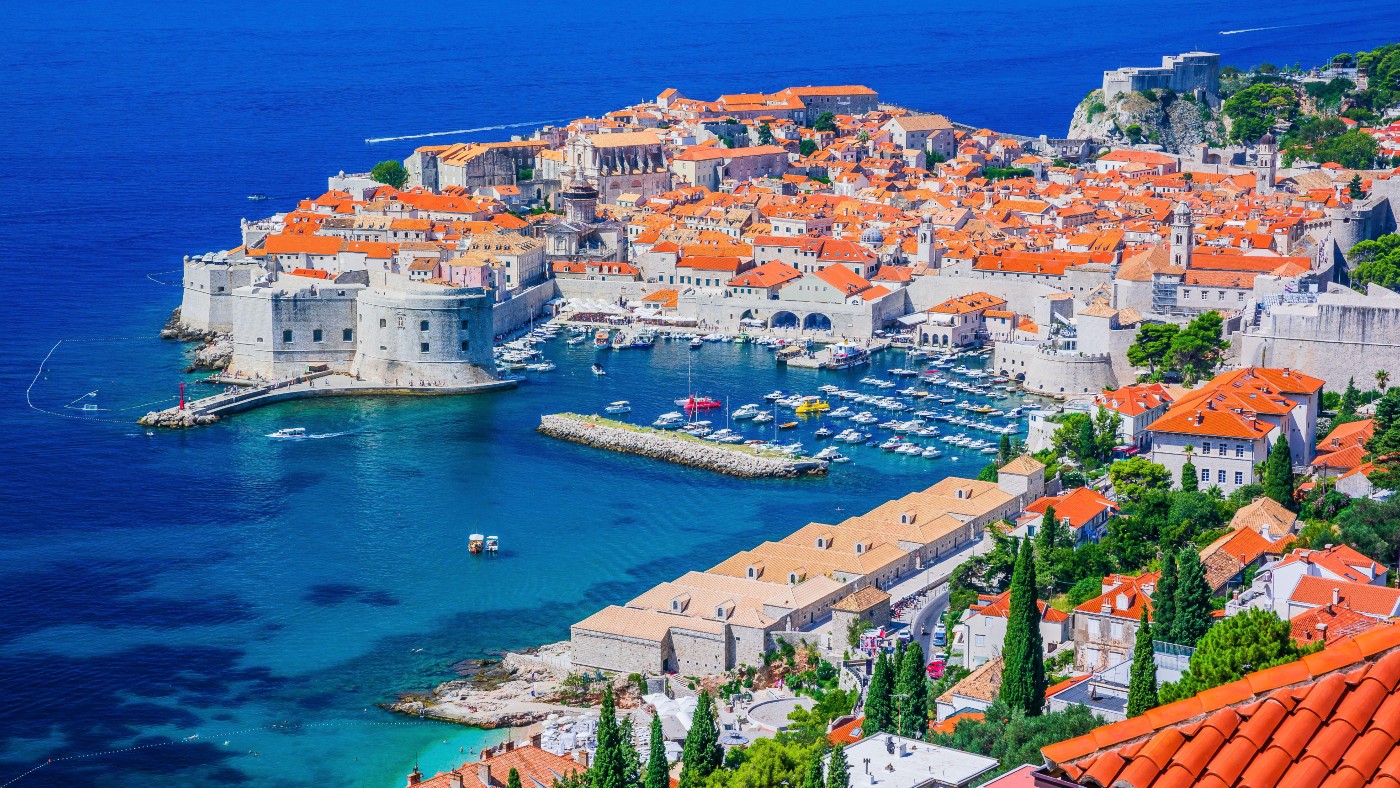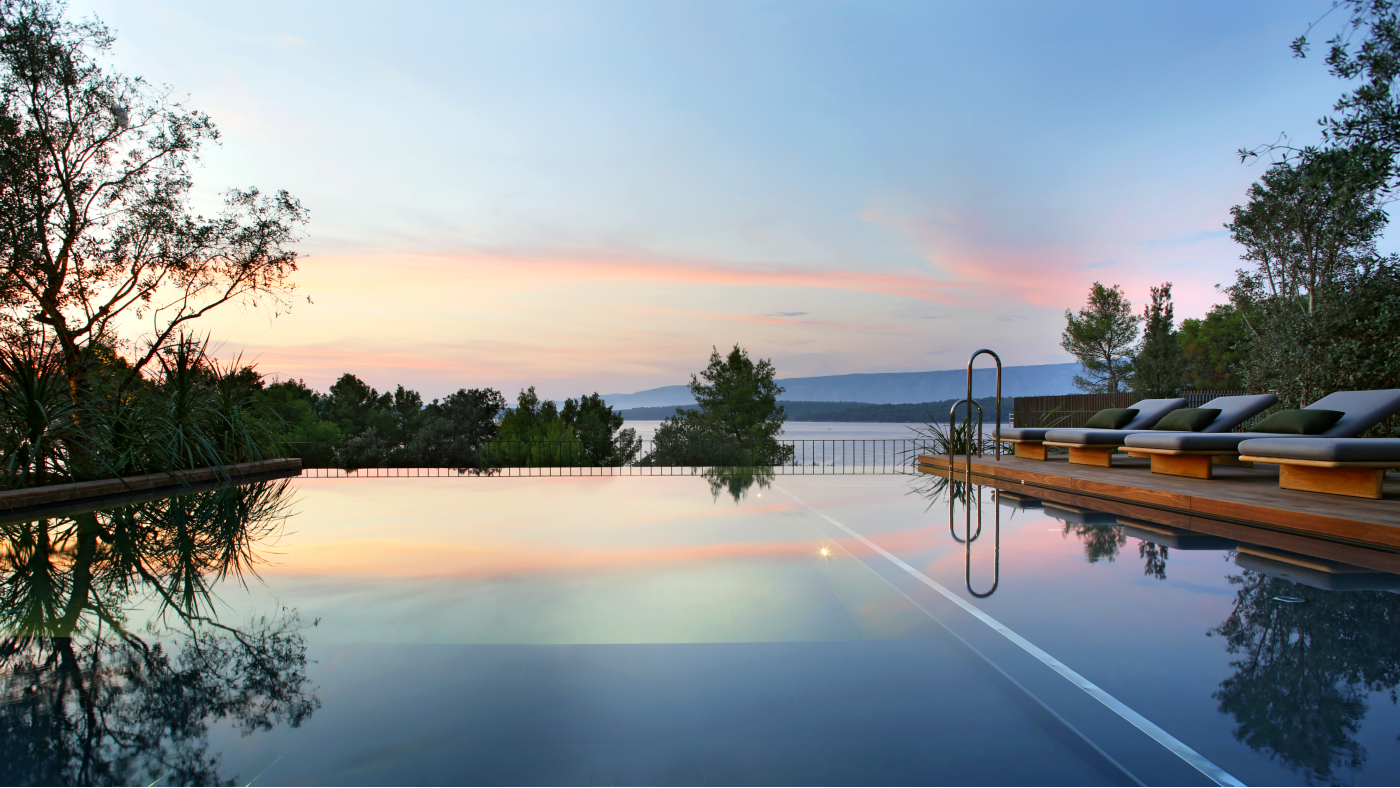Digging for a ‘joker’: truffle hunting in Istria
Searching for ‘white diamonds’ in a corner of the peninsula with a distinctly Italian feel

Autumn, and we are deep in the Motovun forest near Buzet on the Istrian peninsula. Despite the forbidding weather, we are here to find what Istrians call a “joker”, an enigmatic giant white truffle commanding upwards of £4000 per kilo.
Luck, determination and a trained nose turn up a few of these tuber magnatum each season, but usually the prize is something closer to a conker - which in spite of not being the true prize, is perfect for two to season pasta, refine scrambled eggs or add a distinctly luxurious treat for one shaved over a rib of beef cooked over an open flame.
Our hunt is led by Sanjin, a guide descended from a line of truffle hunters, and three of Karlic Tartufi’s best noses: Lela, a 13-year-old German pointer who has earned the nickname “ATM” for her skills, and Lagotto Romagnolo sisters Candy and Betty. Female dogs are preferred, Sanjin tells us; males get too easily distracted.
The Week
Escape your echo chamber. Get the facts behind the news, plus analysis from multiple perspectives.

Sign up for The Week's Free Newsletters
From our morning news briefing to a weekly Good News Newsletter, get the best of The Week delivered directly to your inbox.
From our morning news briefing to a weekly Good News Newsletter, get the best of The Week delivered directly to your inbox.

Black and white truffles grow here, the white more valuable with a headier, almost volatile aroma. Coveted by some but loathed by others, it is a testament to the mythology of the truffle that Greek essayist Plutarch thought them the fruit of lighting bolts colliding with soil. They were first recorded thousands of years ago in Mesopotamia, which now corresponds to in modern days roughly corresponding to most of Iraq, Kuwait, the eastern parts of Syria and Southeastern Turkey. Although desert truffles were feasted on in medieval Baghdad and the French enjoyed “white diamonds” at court, it wasn’t until the 19th century that they became a popular delicacy.
As the dogs crisscross the forest floor, noses turning leaves, Sanjin calls out the encouraging command “shoo shoo” to keep up motivation. He guides them towards oak, acacia and blackthorn trees, their root systems particularly fertile for fruiting truffles. When the dogs catch a scent Sanjin spurs them on to dig, keeping a close eye because dogs, it seems, have developed as much of a taste for truffles as humans. It takes four seasons to train a truffle dog, he says, first by treating puppies to truffle-oil-soaked bread or truffled cheese hidden in the woods, and later by taking them out with experienced dogs to watch and learn.

Lela, who also has a penchant for mole hills, leads us to an oak tree. Sanjin swiftly determines if there’s anything to be found with a trowel and some gentle excavation, pulling a handful of soil from the dig site and inhaling deeply. The scent of truffle is so strong that it perfumes the earth surrounding it, so sniffing the soil is a nifty trick to decide whether to keep digging or move on. You can harness this same aromatic property at home by storing your truffles with eggs or arborio rice - often used to make risotto.
After more than a few false starts Sanjin spots Lela scraping furiously at the ground with one paw. “She always uses two paws for moles and one for truffles,” he says, the kind of intimate observation that comes from years working together in the business. We hold back the dogs while Sanjin carefully digs, unearthing a white truffle, a muddied pearl the size of a crabapple, soil and air now pungent with telltale musk. Not exactly a joker, but a worthy haul nonetheless.
A free daily email with the biggest news stories of the day – and the best features from TheWeek.com

We ask Sanjin which country produces the best truffles. “Ask an Italian, they will say Italy. Ask a Croat, and they say Istria,” he wryly responds. And with that we call it a day, returning to Sanjin’s veteran Berlingo to start tasting. We eat truffled eggs, scrambled and buttery, with parmesan and a snow of white truffle grated on top. A scaled-up version of this dish, using over 2000 eggs and 10 kilograms of truffles, is served annually to the townspeople of Buzet, marking the start of the truffle season.
Where grapes grow in Istria so too do olives, the truffle completing what might be considered to be the region’s gastronomic trinity. Our next stop, then, was to Kabola, an organic vineyard owned by the Markezic family who have been making wine and olive oil in Momjam since 1891. Aptly, we arrive on the eve of St Martin’s Day, a day marked in Croatia by a feast denoting the transformation of must into wine, and are greeted by Marin, one of Kabola’s young makers. The speciality here is amphora-aged Malvasia, buried deep below ground in the ancient Greco-Roman method.
Amphora fermentation, prolonged until late spring Marin explains, lends the finished wines a “nobility” and a round, rich flavour. We enjoy a 2016 vintage with a platter of Istrian sheep’s cheese and local prosciutto, seasoned liberally with the first press of Kabola’s Istarska Bjelica olive oil, the groves planted opposite the vines. Apple cake accompanies a glass of Momjan Muscat, a semi-sweet wine with intense apricot and honey notes, and the first variety to be planted by here over a century ago.

Restaurants
Konoba Morgan, a farmhouse restaurant in the hills near Brtonigla, is a welcoming bolthole where local meat and game take centrestage. Rolls of cured ruby-red Boskarin, Istria’s iconic long-horned cattle, were superb with a glass of Xtrian Brute Rose made around the corner at the neighbouring Veralda Winery. Food and drink does not travel far here, so it always fresh.
Stari Podrum, once the oldest liquor distillery in Istria, is now a popular local restaurant. Ask to sit in the dining room within the original stone building, it’s much cosier, and enjoy a long supper by their open wood fire. The menu here is strictly seasonal: we ate fusi, a type of hand-rolled fresh Istrian pasta with a sauce of earthy foraged wild mushrooms, rich with cream and parmesan and steaks grilled over an open fire in a corner of the restaurant. A crispy mashed potato cake and sauerkraut, smoky with bacon make perfect, made for perfect, warming sides.

Other things to see and do
Before the breakup of Yugoslavia, Istria was Venetian for five centuries, then Hapsburg, Napoleonic, Austrian and finally Italian between the World Wars. It has a rich and diverse cultural heritage, and a distinctly Italian feel. This influence is no greater felt than in Rovinj/Rovigno, a picturesque port town which is officially bilingual.
Begin with coffee at the Hotel Adriatic, where outdoor tables give on to a small harbour, followed by a guided tour from Goran Cvek, an expert host who draws out the history and cultural nuances of this ancient city with great skill. Don’t miss Balbi’s Arch, a baroque monument crowned with the head of Venetian on one side and the head of an Ottoman on the other, and panoramic views (occasionally all the way to Venice) from St Euphemia’s campanile.
Karlić truffles - GIR Ltd.
Paladini 14, 52420, Buzet, Croatia
Kabola
Kanedolo 90, Momjan, 52460, Buje, Croatia
Konoba Morgan
Bracanija 1, 52474, Brtonigla, Croatia
Stari Podrum
Most 52, 52462, Merišće, Croatia
Hotel Adriatic
Obala Pina Budicina 16, 52210, Rovinj, Croatia
Easyjet fly to Pula frequently in Summer; in Autumn and Winter you’ll need to fly to Llubjana in neighbouring Slovenia and drive around 2 hours to Istria. We stayed in the San Rocco Heritage Hotel, Srednja Ulica 2, Brtonigla, Croatia
-
 A lemon-shaped exoplanet is squeezing what we know about planet formation
A lemon-shaped exoplanet is squeezing what we know about planet formationUnder the radar It may be made from a former star
-
 Political cartoons for January 4
Political cartoons for January 4Cartoons Sunday's political cartoons include a resolution to learn a new language, and new names in Hades and on battleships
-
 The ultimate films of 2025 by genre
The ultimate films of 2025 by genreThe Week Recommends From comedies to thrillers, documentaries to animations, 2025 featured some unforgettable film moments
-
 The best islands to visit in Croatia
The best islands to visit in CroatiaThe Week Recommends Venture beyond Dubrovnik to discover the Adriatic Coast's hidden gems
-
 Maslina Lavender Sleep Retreat: restful relaxation inspired by the flower
Maslina Lavender Sleep Retreat: restful relaxation inspired by the flowerThe Week Recommends The perfect chance to truly unwind at this gorgeous hotel on the Croatian island of Hvar
-
 Istria, a jewel in the Adriatic
Istria, a jewel in the AdriaticThe Week Recommends This idyllic Croatian peninsula flies under the radar
-
 A weekend in Dubrovnik: take it easy on Croatia’s Dalmatian Coast
A weekend in Dubrovnik: take it easy on Croatia’s Dalmatian CoastThe Week Recommends Explore ‘the pearl of the Adriatic’ from your base at the landmark Hotel Excelsior
-
 Villa Nai 3.3 hotel review: an olive oil extravaganza on the Croatian coast
Villa Nai 3.3 hotel review: an olive oil extravaganza on the Croatian coastThe Week Recommends This hotel has picked up global accolades for the oil produced from its 500-year-old groves
-
 Rixos Premium Dubrovnik review: a game of views, swims and buffets
Rixos Premium Dubrovnik review: a game of views, swims and buffetsThe Week Recommends Enjoy five-star rooms, food and facilities at this luxury resort in Croatia
-
 Heritage Hotel Fermai Split MGallery review: an ultra-chic stay in bustling Split
Heritage Hotel Fermai Split MGallery review: an ultra-chic stay in bustling SplitThe Week Recommends This boutique is located just minutes from the old town, palace and promenade
-
 Maslina Resort review: a relaxed and chic island retreat in Croatia
Maslina Resort review: a relaxed and chic island retreat in CroatiaThe Week Recommends Mediterranean charm meets European fine dining on Hvar island